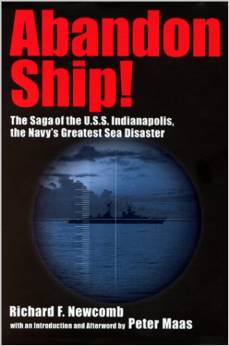If someone asked you what a car ferry is, what would you say? Have you ever seen one? I have to admit, I thought I knew, having grown up in Washington, where we have the largest ferry system in the United States, and the fourth largest in the world! But I learned something new… A car ferry is not, as you might assume, for automobiles, but rather it transported fully loaded train cars across the Great Lakes.
After spending the first night of our mini road trip in Manistee, Michigan, we got on our way – our first stop was at the historic car ferry, the SS City of Milwaukee. This particular car ferry shuttled train cars from Muskegon, Michigan to Milwaukee, Wisconsin. It was built in 1931, and sailed until 1982 when she was permanently retired. She is listed as a National Historic Landmark.
The ship is in her original condition, with the tracks in the cargo bay to drive the train cars in, and the original woodwork and brass fittings. Of course, continuing with our theme for the trip, we saw none of this, because we only got to view her from the outside. The SS City of Milwaukee was, you guessed it, closed for the season…
Still, she was quite impressive to see from the outside – with its 354 foot length and 56 foot width, she could carry between 30 and 32 loaded coal cars. She was steam operated, with two triple expansion steam engines, and is the last operational railroad car ferry on the lake.
The ship is also used for haunted house tours in October (but only on the weekends and we were there on a weekday) and is currently being preserved. There is some talk of turning her into a bed and breakfast, but I don’t know how real that is. The website does say there is an overnight tour – but doesn’t offer any details. Our visit to the SS City of Milwaukee was a brief stop and we were on our way.
Next up – the Manistee Pierhead Light! The first light was built in 1870, but unfortunately, it promptly burned down in an 1871 fire that also destroyed much of Manistee. Coincidentally, that was the same day as the Great Fire of Chicago, and major fires in Peshtigo, Wisconsin, Holland, Michigan, and Port Huron, Michigan.
The light was rebuilt and moved several times; the current tower was constructed in 1927 of cast iron. It is 39 feet tall with a fifth order Fresnel lens. This light has a unique feature – an elevated catwalk on the pier makes it easier to walk from the mainland to the lighthouse in bad weather. It still looks rather precarious.
The south pier in Manistee has a 37 foot navigational aid, also built in 1927. We stopped to take photos of both, and enjoyed the view for a little while, at least as long as the cold wind allowed…
While we were in Manistee, we walked along the river walk that runs right through downtown Manistee just behind the row of buildings on the main street. It was quaint, with benches for sitting and stairs to take you back up to the street. It would be the perfect place to sit with an ice cream cone in the summer and watch the boats go by.
Even though it was cold when we were there, we got to watch a sailboat go through the two drawbridges! There’s is something about a drawbridge that gets me every time – I love the idea of the hustle and bustle of traffic stopping to let this little boat through.
We also walked along the main street and took some photos of the historic downtown buildings. The entire downtown area is listed on the National Register of Historic Places! We found an outdoor clothing store that also happened to have a coffee shop. So we were able to get a warm up and a warm hat in the same place!
Have you been to Manistee, Michigan? What was your favorite part?































